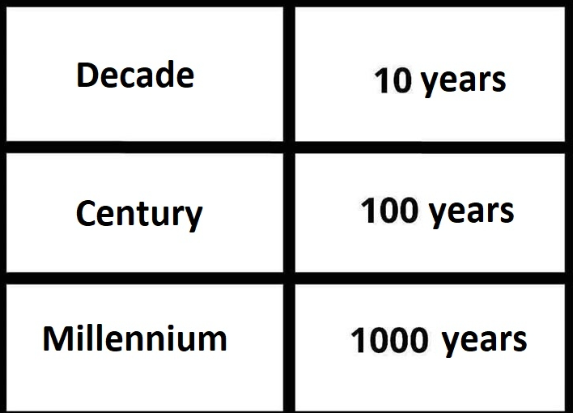Understanding a Millennium: How Many Years in a Millennium?
The concept of time has intrigued humanity for centuries, leading to the development of various units to measure it. One such unit that holds immense significance is a millennium. In this article, we'll explore the definition of a millennium and delve into its historical and cultural relevance.

How many years is a millennium?
1. Defining a Millennium:
A millennium refers to a period of one thousand years.
This term is derived from the Latin words "mille" (meaning "thousand") and "annus" (meaning "year"). Millennia (plural of millennium) serve as markers for significant historical, cultural, and societal changes.
It's important to note that the concept of a millennium is not limited to a specific calendar system, but rather represents a span of time.
2. Cultural and Historical Significance:
The term "millennium" often carries connotations of major shifts, advancements, and celebrations. Here are some instances where the concept of a millennium holds cultural and historical significance:
-
Millennium Celebrations: The transition from one millennium to another is often celebrated worldwide. Y2K, marking the transition from the 20th to the 21st century, witnessed large-scale celebrations and concerns related to computer systems and technology.
-
-
Religious Beliefs: In various religious and spiritual traditions, the concept of a millennium is associated with prophecies, apocalyptic events, or significant divine interventions. For example, in Christianity, the concept of the Millennium refers to a thousand-year reign of Christ.
-
-
Historical Milestones: Millennia are often used to categorize historical periods. For example, the "1st millennium" typically refers to the years 1 to 1000 CE, while the "2nd millennium" spans from 1001 to 2000 CE.
-
3. Transition of Millennia:
The shift from one millennium to another has been accompanied by speculation, anticipation, and celebration. Some noteworthy transitions include:
-
Year 1000 CE: The transition from the 10th to the 11th century CE sparked curiosity and, in some cases, apprehension, as people pondered the potential significance of the new millennium.
-
-
Year 2000 CE: The transition from the 20th to the 21st century brought about the Y2K phenomenon, where concerns arose about the ability of computer systems to handle the change in date.
-
4. The Millennium Bug (Y2K):
As the year 2000 approached, there were concerns about the "Millennium Bug," also known as the "Y2K Bug." This bug was rooted in early computer programming practices that used only the last two digits to represent years. As a result, there were worries that computer systems would interpret the year 2000 as 1900, potentially causing widespread malfunctions.
5. Millennium vs. Century:
It's important to differentiate between a millennium and a century. A millennium encompasses 1000 years, while a century spans 100 years. For example, the 20th century includes the years 1901 to 2000, whereas the 2nd millennium covers the years 1001 to 2000.

Decade - Century and Millennium
A millennium is a significant unit of time that symbolizes the passage of one thousand years. It has cultural, historical, and even religious implications that shape how societies perceive and mark the passing of time. As we consider the concept of a millennium, we are reminded of the milestones and changes that occur over the course of these extended periods, shaping the course of history and the world around us.